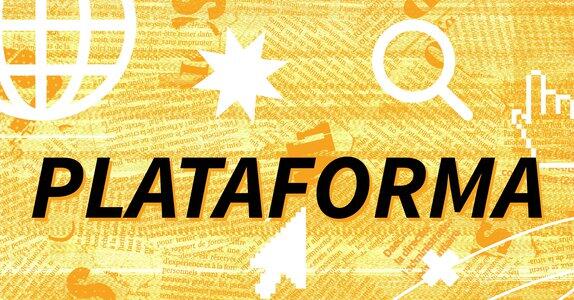November 8, 2023, 6:40 p.m.
Unlocking your cell phone screen is like opening the door to a room with several other doors. You can open a new door, see what’s there, and return to the first room. There are rooms that communicate, others not. The only rule is that access is always through this first room.
This first piece is the operating system that runs on your cell phone, whether it is Android (from Google) or iOS (from Apple) — 99% of all devices in the world use one of two systems. Thus, Google and Apple are able to filter, from the outset, almost all the applications that you can access on your device.
Maybe you never thought about it because, after all, you always found everything you wanted on the Play Store or App Store. Yes, both companies can simply make an app disappear and you won’t be able to do anything about it.
A similar power has Meta, owner of Facebook and Instagram, which since June this year prevents sharing of links to news published by Canadian media. The reason? He disagrees with a law approved in the country that provides for remuneration of content producers. The company has the key to a door that, ultimately, is capable of controlling many others.
The “walled gardens” described by Chris Anderson more than 10 years ago in the cover of Wired magazine (Platform #15) seem much more dangerous today than in the past.
Learn more
We live in and through an Internet of platforms, where big tech companies decide the rules of the game and rules that, of course, can change at the convenience of shareholders. People transformed into users who adapt to business requirements.
But it wasn’t always like this. The Internet was once a condominium with many doors whose organizing principle was that there would never be a room without doors or just one door opening the way to all the other rooms. In this condominium there was no entrance or exit, because it was possible to enter and exit as many places as there were connected networks.
The name itself, Internet, comes from interconnection, a term used by computer scientists involved in its genesis in the 1970s. They referred to the work of making interconnected networks work together. In simpler terms, they wanted to allow messages sent from a computer inside a moving truck on a California highway to reach recipients in different corners of the planet, within 2 seconds.
Well, they did it in 1977 and the one sending the messages from inside the van was none other than Vint Cerf, the one who, along with Robert Kahn, created the “common language” of the Internet or the matrix key to all ports. : TCP/IP protocols.
Doors closed. In a book, American writer Ben Tarnoff explains that the Internet is no longer a free territory (Disclosure)
This story, and many others, are in the book “Internet serving citizens: the fight for our digital future” (“Internet for people: the battle for our digital future”, in free translation), by the American writer Ben Tarnoff. The author starts from the history of the Internet to understand how we went from an open and free territory, where everyone could connect, know and invent anything, to the current universe full of security doors and checkpoints.
Tarnoff points out that the entire Internet infrastructure was created through significant public investment over more than two decades. It is estimated that in the United States alone, more than $2 billion was spent until the early 1990s to make this Internet possible. From scientists to the military, many people worked together for a long time and with a lot of money to make the idea that transformed our lives possible.
So what went wrong? The original sin, for the author, is the privatization of the infrastructure that supported the early days of the Internet. In 1995, in the United States, the public backbone which had until then allowed the network to develop was disconnected. Private infrastructures were until now complementary and put in place since the early 1990s.
Agree, the very success of the Internet required gigantic new investments, because the volume of data traffic grew exponentially. However, by abandoning public control in favor of a private oligopoly — according to Tarnoff, 5 controlled companies the entire network infrastructure in 1995 in the United States, compared to 12 today – the focus has shifted from how to connect more people to how to gain the most money possible.
This cycle of openness, democratization and freedom followed by the formation of large monopolies or oligopolies was also observed by Tim Wu, a law professor at Columbia University, in his book “Empires of communication” (Zahar, 2012).
One of Wu’s arguments in the book is that telecommunications infrastructure requires such a high level of resources to progress that it always tends toward monopoly. And the simple fact of breaking these monopolies, he shows in the book, does not necessarily lead to an improvement in services to users, quite the contrary.
Learn more
The way out of this impasseAccording to Tarnoff, it’s about returning to something closer to the early Internet, decentralized and supported by community networks. The author points out that in the United States only, there are already 900 broadband networks maintained by municipalities or cooperatives.
Among their advantages are higher quality, as they are able to reinvest their profits in the network itself and not distribute them to shareholders, as well as bringing citizens closer to the management of an infrastructure crucial to their lives. An open and democratic Internet from its foundations.
There is no panacea to solve this problem and, in the Brazilian case, it is possible to imagine problems ranging from lack of money to the participation of criminal groups in the exploitation of this type of services in cities like Rio de Janeiro.
Yet it seems that we are like one of Saladin’s generals taken prisoner in Tripoli Castle. At the back of his cell, there were two doors, each guarded by a soldier. The prisoner could ask a question that both would answer and thus choose which door to exit through. One led to freedom. Another, in the executioner’s room.
One of the soldiers only told the truth, the other always lied. The general asked the question, they both pointed to the same door. He went the other way, free.
It will be up to us, like the general, to decipher our version of the enigma and choose the door that will lead to freedom. Or not.

“Typical zombieaholic. General twitter fanatic. Food fanatic. Gamer. Unapologetic analyst.”







